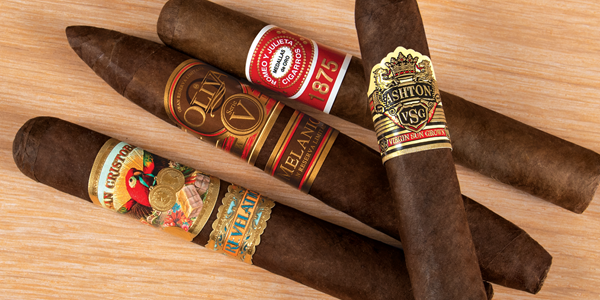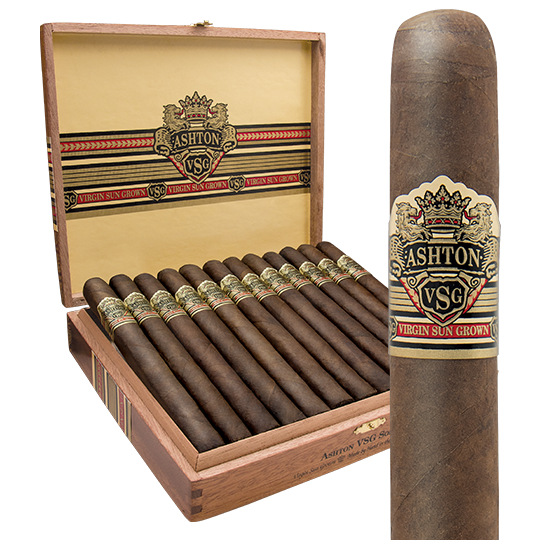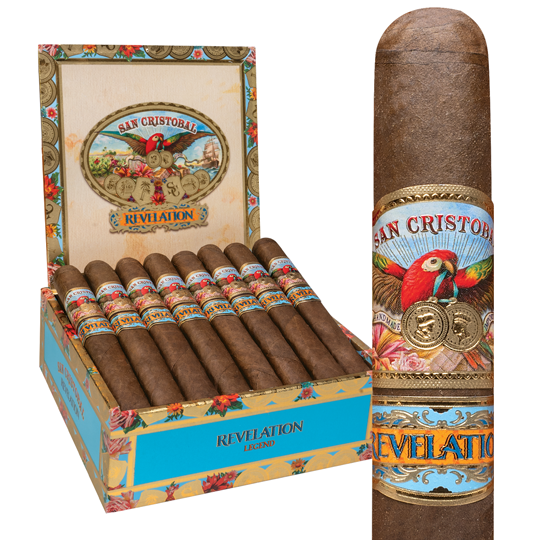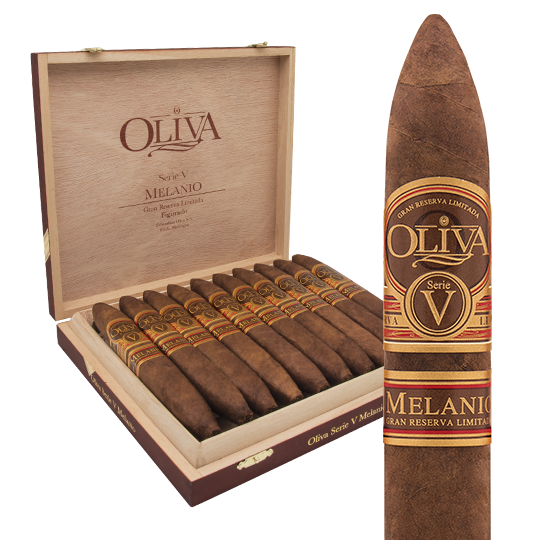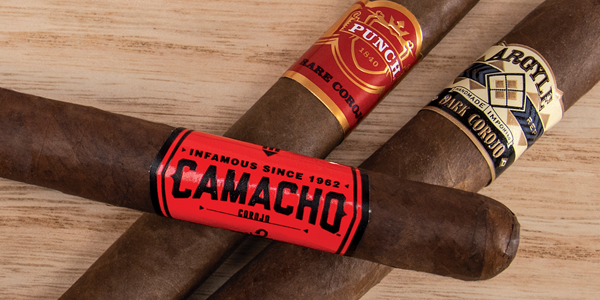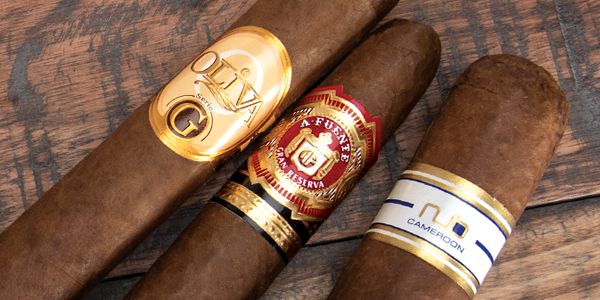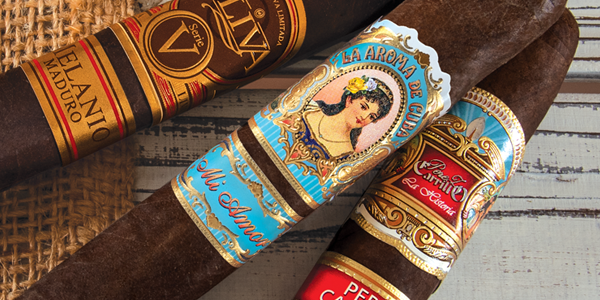All About Sumatra Wrappers
I’m wondering if those of you of a certain age remember the promotions for a 1968 movie called Krakatoa, East of Java. I discovered only when I visited Indonesia that Krakatoa, or Krakatau, a small island with a huge volcano, actually was to the west of Java. So is the much larger island of Sumatra.
Sumatra Wrapper
The island of Sumatra is actually the sixth-largest island in the world, not counting continental landmasses like Australia. On that island, Sumatra tobacco – a type known as black tobacco – grows and accounts for a wrapper leaf that is relatively mild and a bit sweet. Generally, the flavors you get from a Sumatra wrapper include cinnamon, earth, floral notes, and a slightly sweet aftertaste.
Indonesian Versus the World
Opinions among the world’s best cigar-makers differ on the quality of the original Indonesian Sumatra wrapper. Industry veteran Jose Blanco (La Aurora; EP Carrillo) is not fond of the Indonesian strain.
“The Indonesian variety is sharp, metallic and bland,” Blanco explained.
Sumatra seed has now migrated to different tobacco-growing areas like Honduras and Nicaragua, but in Ecuador is where the variety shines.
“The Ecuador Sumatra offers a ton of flavor and aroma,” Blanco said. “It’s totally different, and when you have a spectacular crop, this wrapper is as good as it gets.”
“The Sumatra offers more white pepper and spice, making it a little punchier in flavor,” offered Rocky Patel. “You can get a really full-bodied cigar if you use the 7th or 8th primings, while the middle 4th and 5th primings offer more medium-full body. But the key to getting the most out of Ecuadorian-grown wrapper is a lot of fermentation.”
Jhonys Diaz, of General Cigar, speaks highly of Ecuador Sumatra.
“Ecuador Sumatra is the second-best wrapper for handmade cigars in my opinion,” Diaz said, noting that nothing beats Habano. “The mid and upper-priming leaves are rich in flavor, aroma and potency. It’s woody and peppery and can produce a powerful, complex smoke that brings forth some of the best characteristics in a cigar.”
Ecuador’s Sumatra
Ecuador has grown good cigar tobacco since the 1950s. Los Rios is an agricultural belt that sits between Guayaquil to the south and Quito to the north. It was Cuban cigar industry exiles fleeing the Castro regime who really added tobacco to the traditional bananas, cocoa beans and coffee grown in Los Rios. Local farmers were persuaded to grow Cubano and Sumatra tobacco varietals in what the Cubans considered perfect growing conditions. The American Tobacco Company, later sold to the Oliva tobacco-growing family, grew a type of Candela tobacco. Today, Oliva grows a good amount of the Ecuador wrapper leaf, mainly Habano, used by premium cigar-makers.
As time passed, Ecuador’s tobacco community, more specifically the Aray family, began to experiment with crossbreeding to meet the demands of the American market. That led, in 1967, to the creation of the Ecuador Sumatra, made by blending Cubano and Sumatra varieties. That is the Ecuador Sumatra cigar wrapper leaf used today.
Sumatra Wrapper Cigars
Most Sumatra wrapper leaf used today comes from Ecuador. The Ecuador Sumatra gets used on premium, handcrafted blends and results in a rich, hearty flavor profile. Indonesian Sumatra, the milder version, is also found on many handmade cigars as well as bundle and bargain smokes.
The cigar with an Indonesian Sumatra wrapper I’ve really liked is the Dominican Romeo y Julieta 1875, the original line. Of course, I choose the Churchill here, 7 x 50 (about $7.00). Let’s call this mild-medium with a slightly stronger finish. Some complexity is evident in the toasted nuts, pepper, and coffee. It’s quite a smooth smoke.
The San Cristobal Revelation line is full of Nicaraguan filler contained by an Ecuador Sumatra wrapper. The Legend, a Toro, 6.25 x 52 (about $8-9.00) is a medium-bodied cigar that provides a very complex flavor that is rich, earthy, and flowery along with notes of leather, cedar, nuts and spice. You’re going to smoke this way past the band.
Obviously, we also love the Ashton VSG, one of the best Sumatra cigars ever blended. I like the Illusion, a Lonsdale at 6.5 x 44 (about $11.00). It’s a powerful blend made by the Fuentes in the Dominican Republic. The wrapper is dark and oily, a perfect exemplar of Ecuador Sumatra wrapper. Of course, the blend of Dominican fillers is exquisite. What comes through is bold earth, cedar, spice and leather. Give this bestseller a try if you can handle something this good.
Another favorite with an Ecuador Sumatra wrapper is the Oliva Serie V Melanio. This Oliva family is not to be confused with the family that grows the wrapper, but they sure do right by it. The 6 x 52 Figurado (about $15) was Cigar Aficionado’s 2014 Cigar of the Year and it’s still superb. The strength is medium, but very full of flavor. The wrapper envelops a beautiful blend of Nicaraguan binder and filler and is box-pressed. You’ll get a delicious mélange of pepper, caramel, and wood notes. The construction of this cigar is among those at the top of the industry, and the cigar is rich in every way you can imagine.
Want a true bargain in Sumatra wrapper? Check out the Don Lino Fumas in a Toro, Churchill or Robusto for as little as 99-cents a cigar. The filler is a sandwich of Nicaraguan tobaccos and the strength is medium. It’s a great cigar to hand out at parties.

